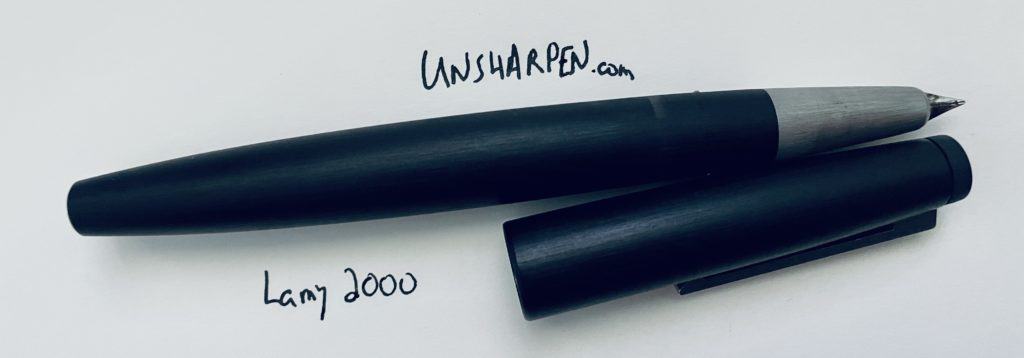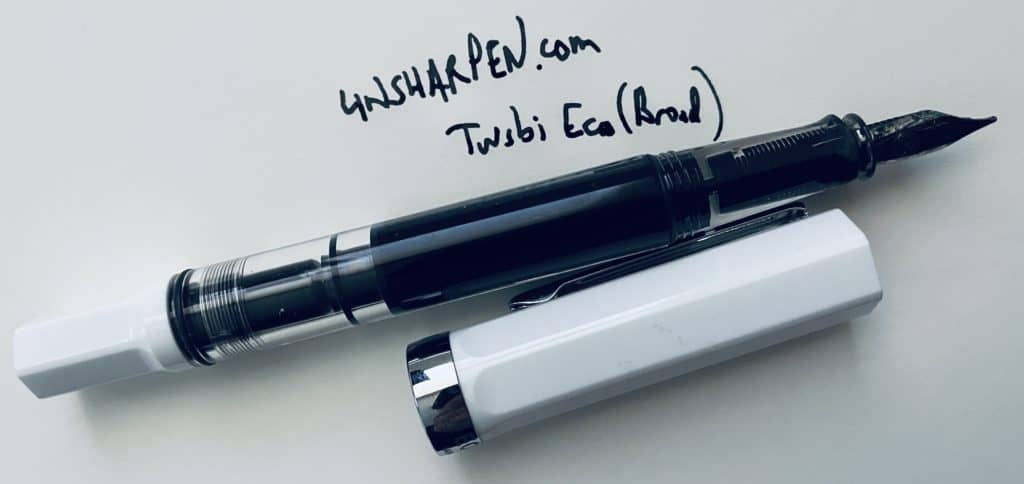Many people see fountain pens as occasional writing instruments, maybe for doing some before-bed journaling or writing a letter, but that doesn’t have to be the case. The right fountain pen can be a great everyday tool, even if it never approaches the no-nonsense functionality of a ballpoint pen.
What To Look For In An Everyday Fountain Pen
An “everyday pen” is going to vary widely based on what your everyday looks like. For many of us this means sitting at a desk and looking at a computer screen, which means that our pen needs to be comfortable, functional (without being utilitarian), and ready to go at all times.
For others, an everyday fountain pen might require some sort of transportation friendliness and some degree of toughness, which veers off from the “everyday fountain pen” to the “everyday carry fountain pen.” While a perfectly valid use case, we’ll differentiate between pens that need to go with you and pens that are simply going to see a lot of use each and every day.
The attributes you’ll want sort through for this “workhorse” pen are…
- Reliability
- Ease of Use (cap type, etc.)
- Ease of Maintenance (cleaning and filling mostly)
- Price
I put these in order based on the impact each will have on your use of the pen and how long it stays your everyday writer.
Reliability is key because the pen has to be ready to go when you want to use it. If you are on a Zoom and you need to write something down, your pen has to be at-the-ready. If your fountain pen can’t accomplish this, you simply won’t use it all the time and will revert to the ballpoint next to it on your desk.
Next comes ease of use, which means the pen has to be simple and trouble-free for you and your work style. This may mean that you opt for a pen that uses cartridges and has a snap-on cap instead of a screw-on one, because both of these things make pens easier to operate. This isn’t about what’s coolest or most desirable, but rather removing the factors that hinder you from using the fountain pen.
Much of the ease of use will come from the sensitivity of the nib and the choice of a filling system. First of all, it’s critical that you find your pen’s nib to be comfortable but not overall sensitive. If every time you want to dash off a thought you are worried about about holding the pen at exactly the right angle and the nib in its perfect “sweet spot” your work will be hindered.
Ease of maintenance might be seen as an extension of ease of use, but for people who use their fountain pen as a primary writing tool, it’s worth distinguishing between the two. A pen that is easy to maintain will have old ink cleaned out quickly, thanks to a feed that lets go of ink freely. The pen will be free of sensitive parts and most parts will be easy and cheap to replace, as well as user serviceable.
Any talk of price must be done relative to one’s own price sensitivity as well as your budget. If you are a professional scribe (not exactly a popular choice these days) or a calligrapher, an everyday pen might be one of your most expensive purchases. For most of us, an everyday pen shouldn’t be too expensive, because it’s something we want to use — not to baby — and you won’t mind when it takes a few inevitable bumps.
A good price range for an everyday pen would be $20 to $180, but this is only a loose guideline. Some people are less price sensitive and will be more inclined to use the pen — that is to say, to work — with a more expensive one, but be careful with this logic as the need to use a new purchase to justify its cost will wear aware quickly.
A Note On Affordable Pens
While many excellent pens are sold under the $20 price point, they don’t have the same level of fit and polish as more expensive pens. They will also not last as long as pens that are a step up in price, so you’ll find small problems accruing, like loose caps and bent clips. This is why this list doesn’t have sub-$20 but otherwise solid fountain pens — like the Platinum Prefounte — they just won’t go the distance of a true daily writer.
Top Choices For Everyday Fountain Pens
Here are some pens that make for excellent everyday writers and will for years. These are all pens that we own and that we have reviewed on Unsharpen.com and/or our Youtube channel…
- Lamy Safari: Affordable and highly usable, this will be the fountain pen that comes to mind for many people. When combined with Lamy’s excellent cartridges its one of the most practical fountain pens sold today. The Lamy Vista is just as good.
- Twsbi Eco: This is a $30 pen that writes and has the features of a pen that’s twice the price. It’s highly rebuildable and both pleasant to use and to maintain.
- Penbbs 456: A large, good-looking pen with a vacuum-filling mechanism that means it carries a lot of ink. The nib is surprisingly good and while it looks underwhelming is writes smoothly and reliably.
- Platinum Procyon: This is a pen that doesn’t get as much attention as it should. It has a stout metal body, a responsive steel nib, and a handsome design. It also has all the smart design decisions found in Platinum’s modern fountain pens, like a nib that basically never seems to try out and use of Platinum’s very good cartridges.
- Lamy Studio: Lamy’s best mid-range fountain pen. It has more weight than the Safari but is a good deal more affordable than the 2000. It’s a really solid choice in a sub-$100 metal fountain pen.
- Platinum 3776 Century: Unsharpen’s favorite fountain pen under $200, this pen writes like a dream and has a simple, reliable cartridge/converter system. The cap works great and it seals so well that the pen is always ready to write.
- Pilot Custom 74: If you want a super smooth writer that has a lot of polish as well as a classic fountain pen look than the Custom 74 is a popular pick.
- Lamy 2000: This is another excellent gold nib fountain pen that is designed to last for year of writing. It’s not quite as easy to service as the rest of the pens on the list, but it is rebuildable. You get a fantastic nib and a body that shows natural wear after use, so you can really feel this pen changing over time and becoming yours.
Pens That Didn’t Make It
Here are some pens you might have thought would be on the list, but aren’t along with the reason they didn’t make it.
- Pilot Metropolitan: A good pen, but lacking in the polish of the pens on the list. Also the nib is less enjoyable and too utilitarian to be a pen that you look forward to using for years on end.
- Pilot Vanishing Point: Despite being a very popular pen, we’ve found the nib to be too finicky for everyday use and the likelihood of ink spitting. The pen is a bit complex on the inside too means it requires more care than any of the pens on the list.
- Kaweco Sport: A fine mini-pen but it’s a bit small and the undersized nib isn’t quite at the quality level of the others on this list. This pen is quite close to making it though.
What’s your workhorse fountain pen? Email us with any thoughts or feedback.


